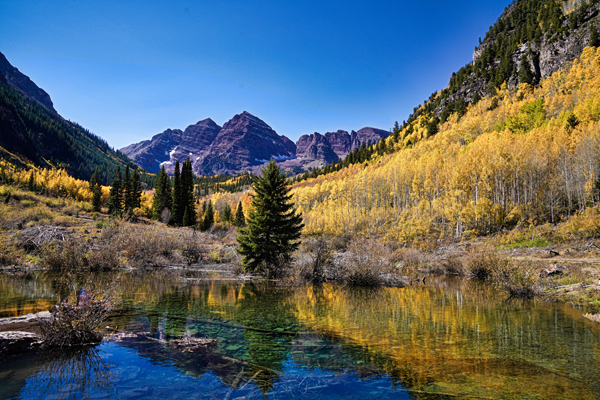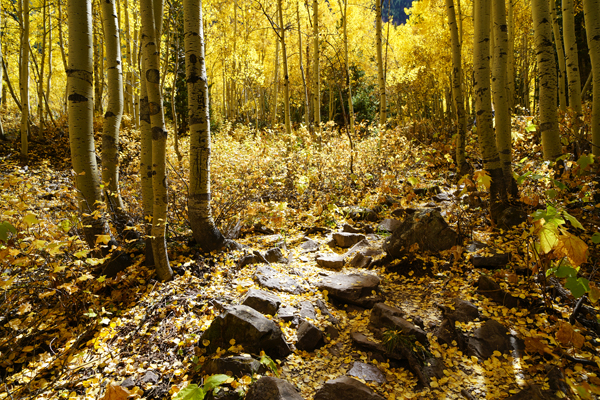It’s the best time to do some fall leaf peeping! While there are many locations to leaf peep, there’s one that really stands out when you think of yellow foliage. People from all over the world travel to Aspen to see the aspen trees. And so I traveled to Aspen and visited the Maroon Bells, dubbed the “most photographed mountains” in the world.

During this COVID-19 pandemic time, in order to visit the Maroon Bells, you’ll need a reservation to park your car or to shuttle over. Word to the wise: It gets sold out quickly! So make sure to book before you get there. In order to ensure a safe distance between passengers on the shuttle, the shuttle will only allow for 15 people at a time and you must wear your mask. The best part about the shuttle was our driver, Bill. Bill shared some facts about the aspen trees, and it inspired me to do my own research.
So what exactly is so special about the aspen tree? Upon first appearance, the yellow leaves look like gold, and the surrounding nature makes the environment feel like a magical, fairytale land. And yet, there is so much more to this tree than its outside beauty.

In fact, the reason why aspen trees look similar is that each tree is a genetic replicate of the other or a “clone.” A group of them is called a “stand.” Standing at 20 to 80 feet tall, these trees are connected by their root system under the soil, making it the largest single organism on Earth. Although they can live for up to more than 200 years, they tend to live 40-150 years above the ground.
When looking up at them, the colors of the leaves may appear to be yellow, gold or orange. So why do these leaves change color starting in mid-September at elevations from 8,000 to 10,000 above sea level? As the days get shorter, the photosynthetic activity of the leaves changes and chlorophyll disappears. The colors may seem brighter depending on if the weather is dryer. When the weather is too hot or too cold, the colors may look dimmer.
No matter the weather, aspen trees grow year-round, even under the snow. Under the white outer bark layer, there is a green photosynthetic layer that allows the tree to create sugars so that even during the coldest winters, the sugary layer provides nutrients for animals — deer, elk, moose, black bears, beavers and rodents are all known to chomp on these trees.

Colorado is known to have the largest amount of aspen trees in thicker concentrations than anywhere else in the United States. While you’ll see these trees throughout the Rocky Mountains, the city of Aspen has a deep-rooted history with them. Originally named Ute City, the city was renamed to Aspen in 1880 due to the abundance of aspen trees.
When I visited Aspen, I saw these trees in Snowmass and on the scenic drive of Independence Pass. But it was in the Maroon Bells that my heart “quaked” like the leaves. The pandemic’s reservation system made me feel like I was alone as the trees’ leaves fluttered with the breeze, and I walked through trails of gold. The clear, blue sky made them shine that much brighter and reminded me that nature still shines on even in humanity’s most challenging times.











